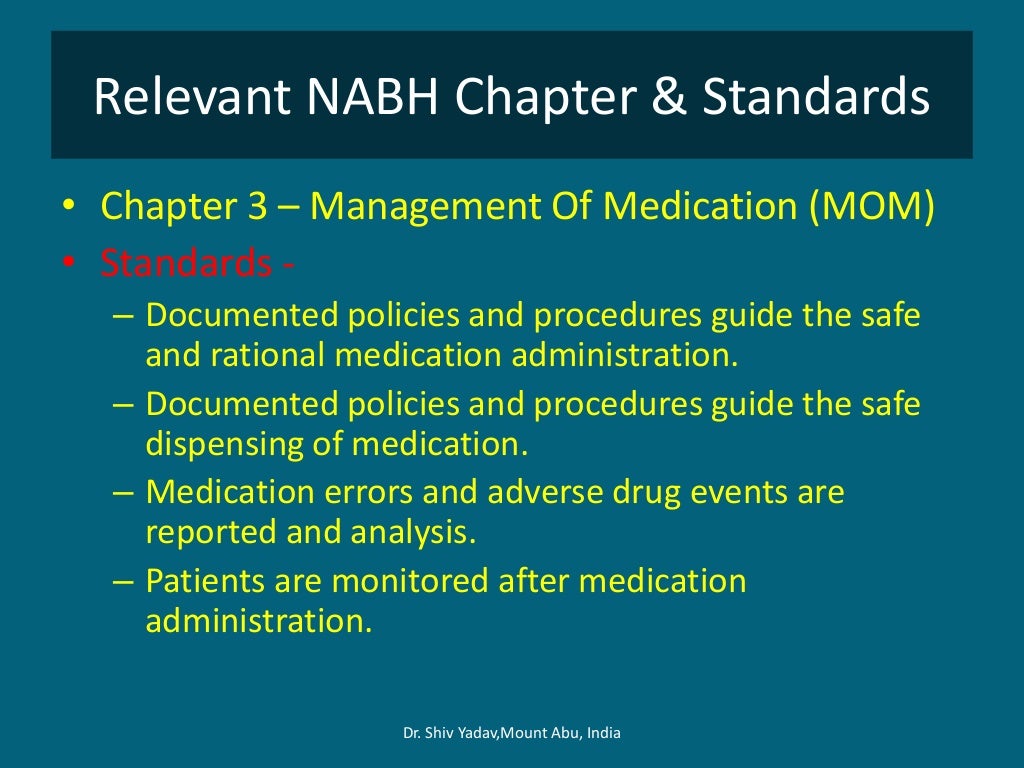
Medication Administration Eight Rights of Medication Administration
These 8 rights of medication administration will help improve patient safety and minimize errors. Follow these 8 rights of medication administration.
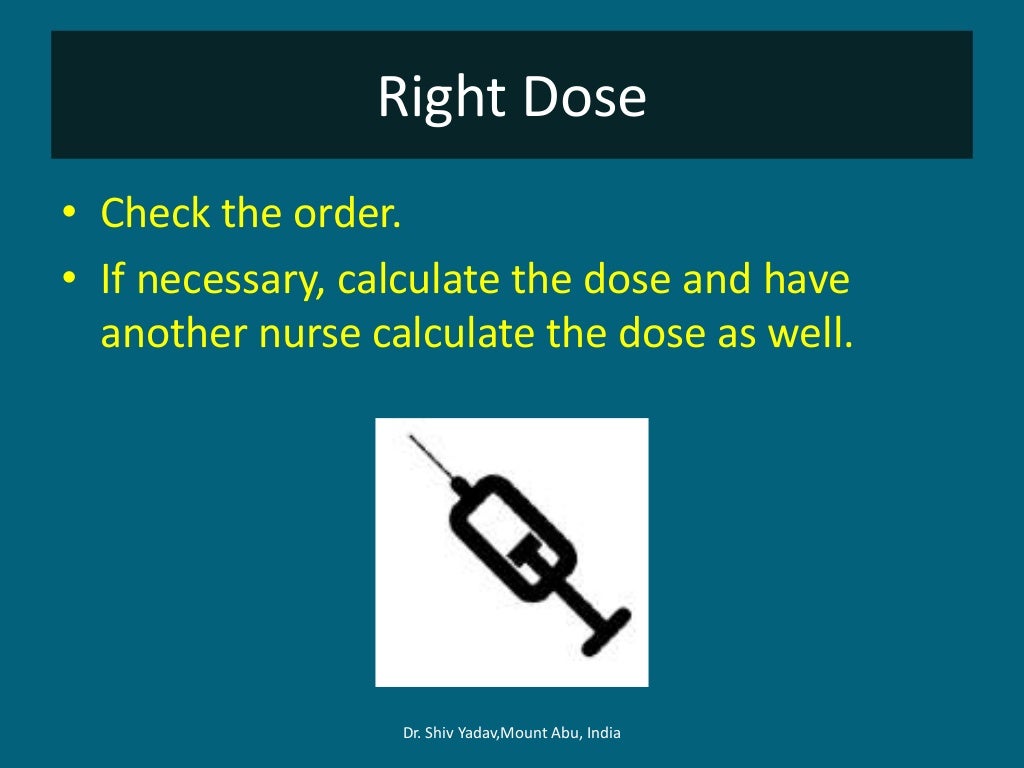
Medication Administration Eight Rights of Medication Administration
The original 5 Rights of Medication Administration are as follows: The Right Patient The Right Drug The Right Route The Right Time The Right Dose Since that time the Right Documentation is a new addition to the Rights of Medication Administration.

Eight Rights Of Eigh t R i g h t s of M ed ication Ad m in istration
The eight rights of medication administration by nurses are the right patient, right drug, right route, right time, right dose, right documentation, right indication, and right patient response.
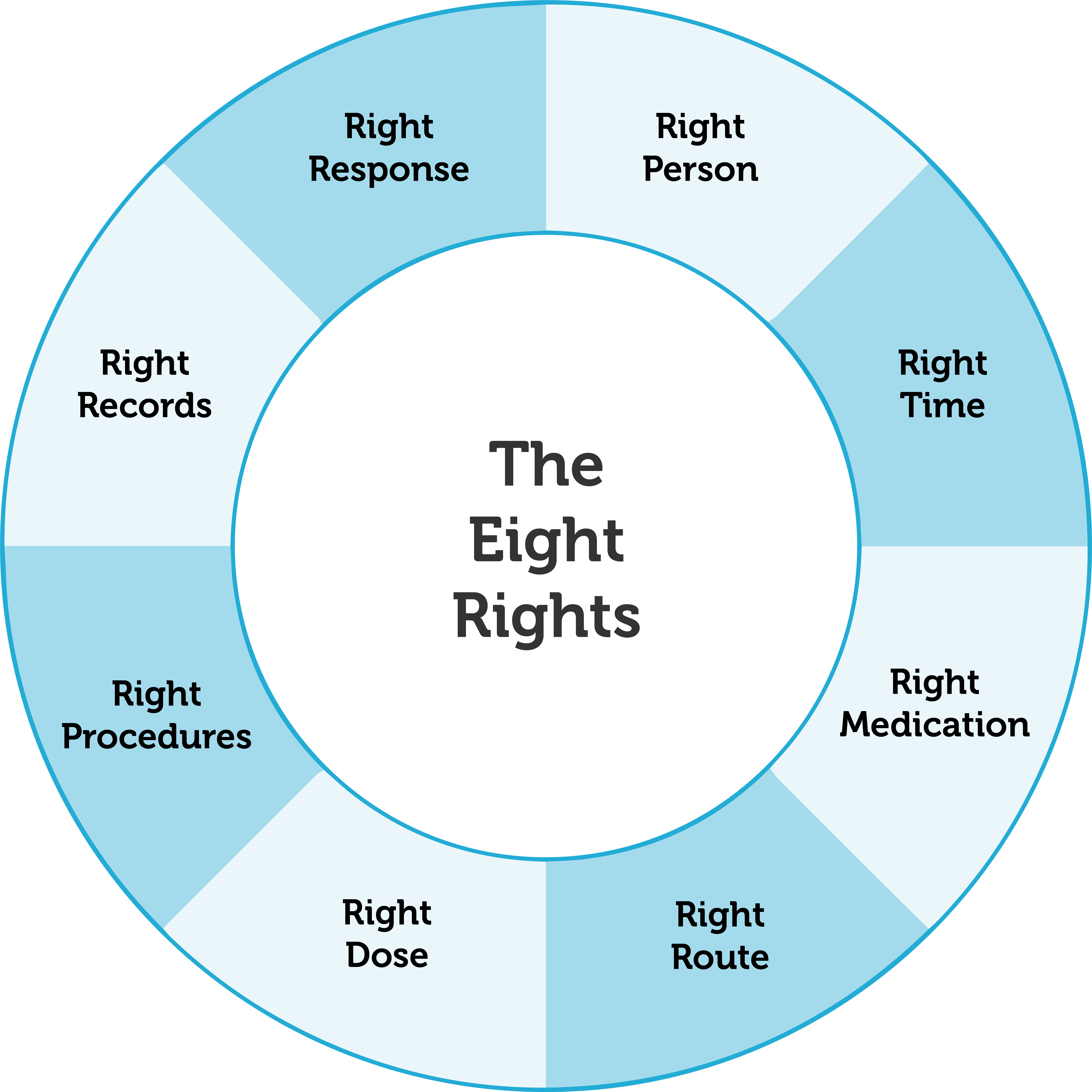
SSSC SAM
It is standard during nursing education to receive instruction on a guide to clinical medication administration and upholding patient safety known as the 'five rights' or 'five R's' of medication administration.

The 8 Rights When Administering Medication Simply Messy
Case Objectives. Discuss five patient safety targets associated with this case. State the eight rights of medication administration. Recognize the importance of documentation of all medications. Acknowledge the importance of handoffs in reducing medication errors. Identify unique challenges associated with care during the night shift.

5, 6, 8, 10 Rights of Medication Administration Nursecepts
One of the recommendations to reduce medication errors and harm is to use the "eight rights" The rights of medications administration are there not only to reduce the harm caused by medications errors but also to protect the interests of the patient and the person administering the medication. » Click here for full information on the 8 rights

8 Rights of Medication Administration Ausmed
1. Right patient Check the name on the order and the patient. Use 2 identifiers. Ask patient to identify himself/herself. When available, use technology (for example, bar-code system). 2. Right medication Check the medication label. Check the order. 3. Right dose Check the order. Confirm appropriateness of the dose using a current drug reference.
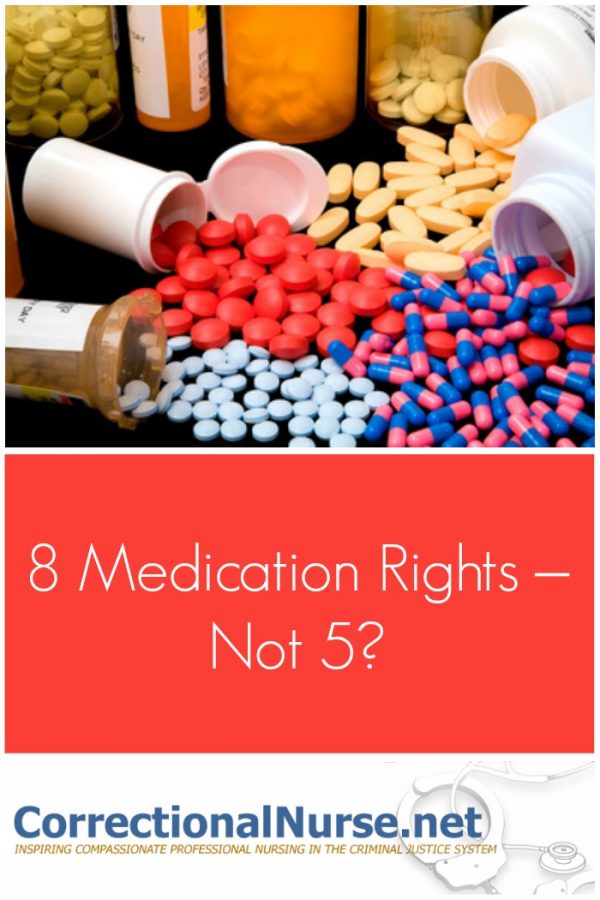
8 Medication Rights Not 5?
Nurses have a unique role and responsibility in medication administration, in that they are frequently the final person to check to see that the medication is correctly prescribed and dispensed before administration. It is standard during nursing education to receive instruction on a guide to clinical medication administration and upholding.

Medication Administration Eight Rights of Medication Administration
The eight rights of medication are right patient, right medication, right dose, right route, right time, right documentation, right reason, and right response. 1. Right Patient: Identify the patient by using at least 2 identifiers. These identifiers may be include their name, date of birth or medical record number (MRN).

The 8 Rights of Medication Administration HCPA
In the past, you may have heard of the " 5 Rights of Medication Administration: right patient, right drug, right route, right time, and right dose." Medical practices have changed to include a few more rights. 10 Rights of Medication Administration 1. Right Patient
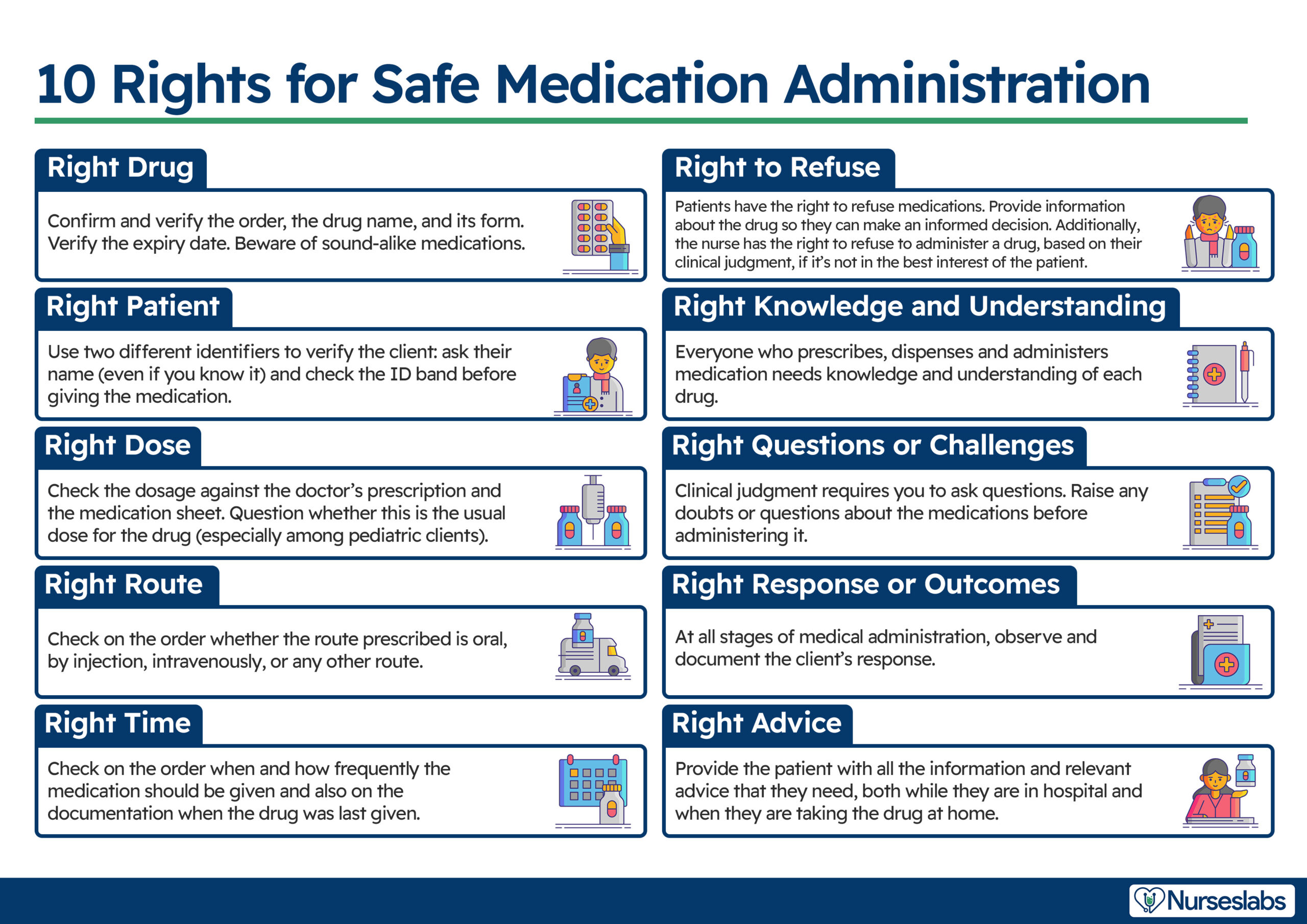
The 10 Rights of Drug Administration Nurseslabs
1. Right Drug. The first right of drug administration is to check and verify if it's the right name and form. Beware of look-alike and sound-alike medication names. Misreading medication names that look similar is a common mistake. These look-alike medication names may also sound alike and can lead to errors associated with verbal prescriptions.
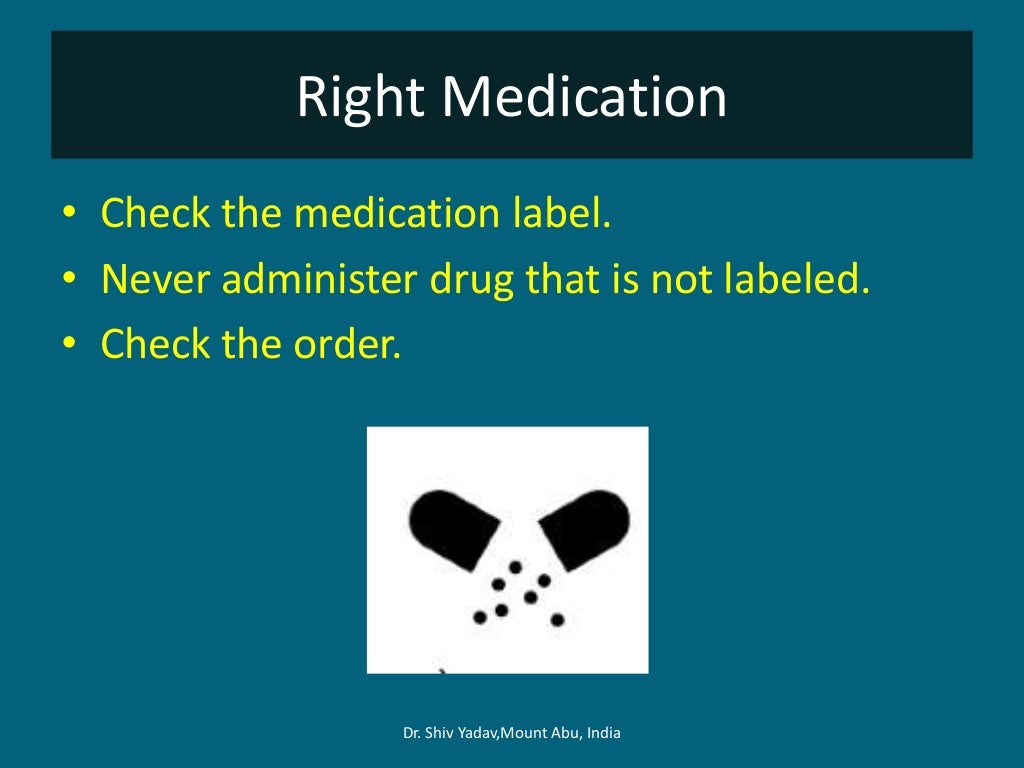
Medication Administration Eight Rights of Medication Administration
Keep an honest record. If a medication was given late or a dose is missed, note that. Check the amount of drugs left to avoid running out before refilling. The Right Reason - Be sure you understand the rationale for the prescribed drug. Confirm the reason for a prescribed drug with the child's caseworker and/or doctor.
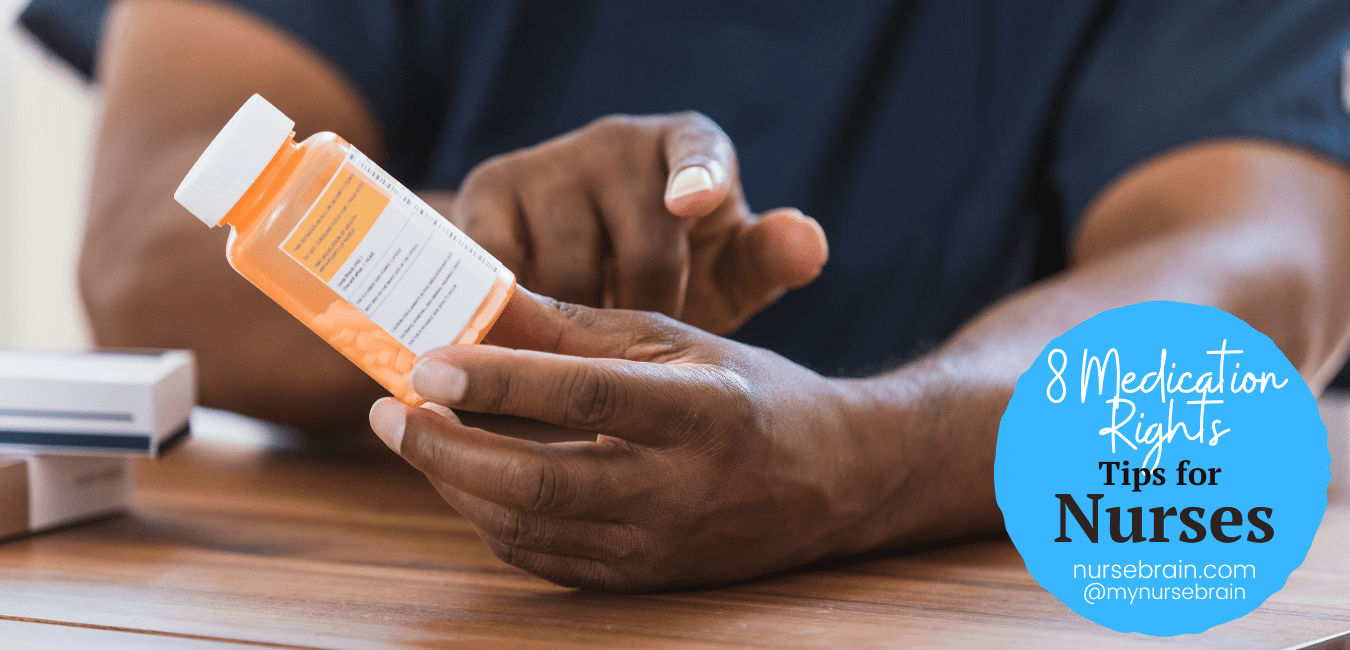
8 Rights of Medication Administration NurseBrain®
The purpose of the Medication practice standard is to outline nurses' accountabilities when engaging in medication practices, such as administration, dispensing, medication storage, inventory management and disposal. Three principles outline the expectations related to medication practices that promote public protection: authority

5, 6, 8, 10 Rights of Medication Administration Nursecepts
There is a large and growing body of research addressing medication safety in health care. This literature covers the extent of the problem of medication errors and adverse drug events, the phases of the medication-use process vulnerable to error, and the threats all of this poses for patients. As this body of literature is evaluated, the fact that there are crucial areas about which we know.
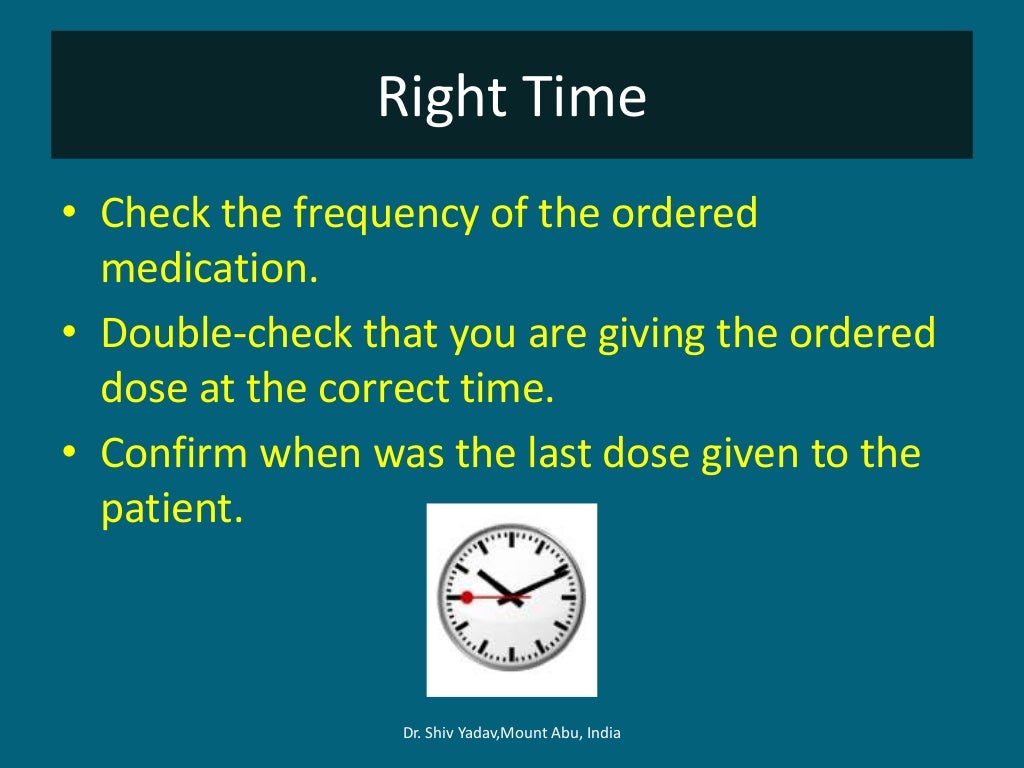
Medication Administration Eight Rights of Medication Administration
In this lesson, we'll go over eight steps that nurses take every time they administer medication to help prevent medication errors. We will also discuss how to document the response to medication, which is a required part of administration and also one of the eight rights. Learning Objectives: Upon the completion of this lesson, learners will.
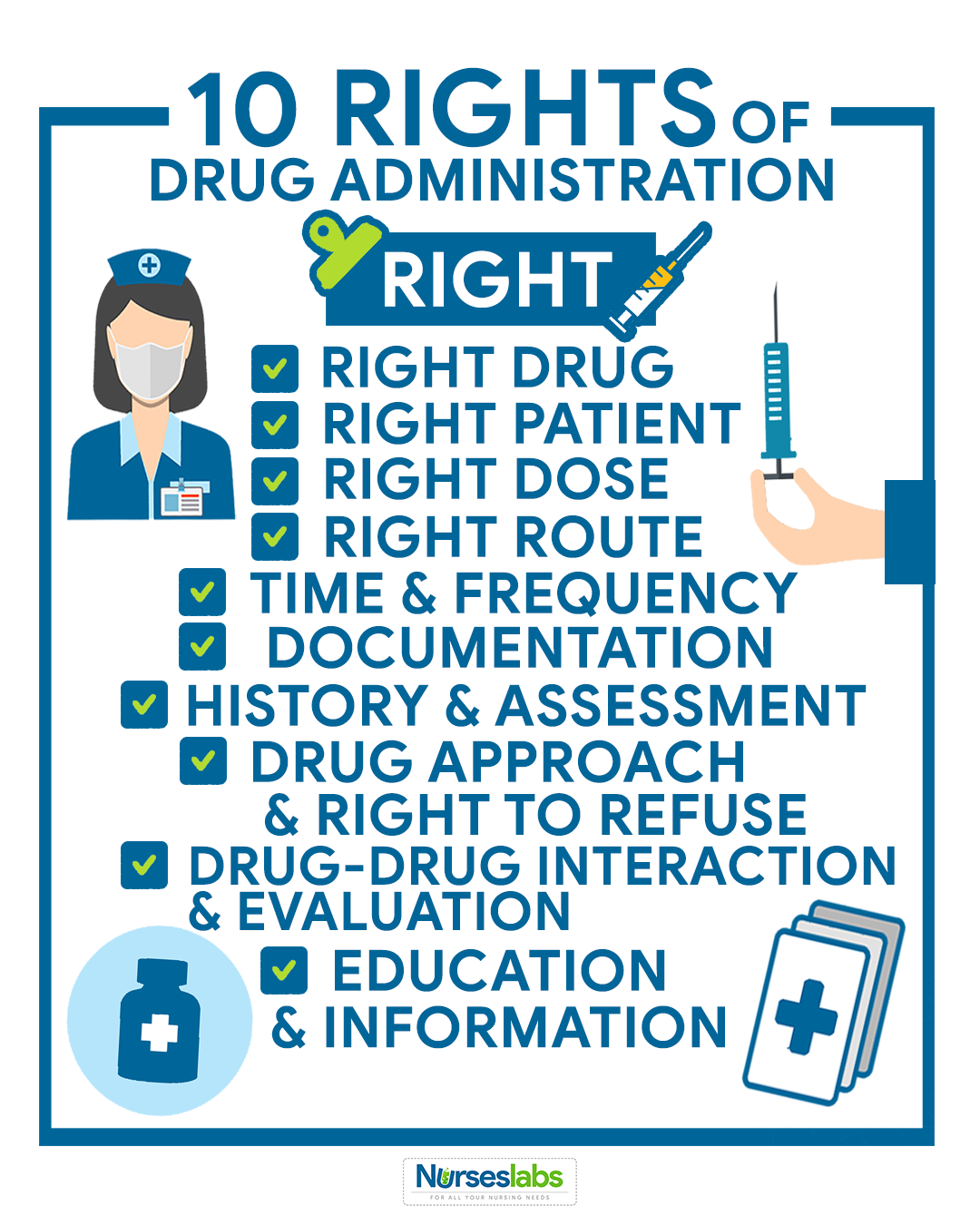
The 10 Rights of Drug Administration Nurseslabs
8 med rights with an eMAR. 1. Right resident 2. Right med 3. Right dose 4. Right route 5.Right time 6.Right documentation 7.Right reason 8.Right response.